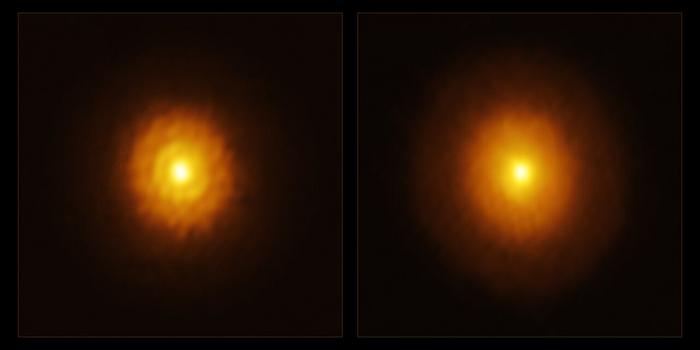What methods can astronomers use to identify exoplanets orbiting within a young exoplanetary system’s disc of dust and gas that surrounds its star, also called a protoplanetary disc? This is what a recent study published in Nature Astronomy hopes to address as an international team of researchers announced the discovery of an exoplanet hiding within its star’s protoplanetary disc using a novel method. This study has the potential to help astronomers use novel techniques for discovering young exoplanets within young exoplanetary systems and could help gain insights into planetary formation and evolution.
For the discovery, the researchers used the powerful Atacama Large Millimeter/Submillimeter Array (ALMA) telescope to observe the MP Mus (PDS 66) system, which is located approximately 280 light-years from Earth and is estimated to be between 7 to 10 million years old. While this system has been observed previously, the astronomers used a different instrument configuration for this study, resulting in the discovery of a gas giant exoplanet orbiting between 1 to 3 astronomical units (AU) from its star, which was identified due to a gap in the disc.
Images of the MP Mus (PDS 66) system obtained from the Atacama Large Millimeter/Submillimeter Array (ALMA) displaying a gap in the disc from the recent study (left) compared to a previous study that didn’t reveal any gaps (right). (Credit: ALMA(ESO/NAOJ/NRAO)/A. Ribas et al.)
“We first observed this star at the time when we learned that most discs have rings and gaps, and I was hoping to find features around MP Mus that could hint at the presence of a planet or planets,” said Dr. Álvaro Ribas, who is a Research Associate in the University of Cambridge’s Institute of Astronomy and lead author of the study. “Our earlier observations showed a boring, flat disc. But this seemed odd to us, since the disc is between seven and ten million years old. In a disc of that age, we would expect to see some evidence of planet formation.”
Going forward, the team aspires to use future telescopes and more advanced instruments to examine exoplanetary discs in greater detail, hopefully discovering new exoplanets in the process.
How many exoplanets in protoplanetary discs will researchers discover in the coming years and decades? Only time will tell, and this is why we science!
As always, keep doing science & keep looking up!
Sources: Nature Astronomy, EurekAlert!
